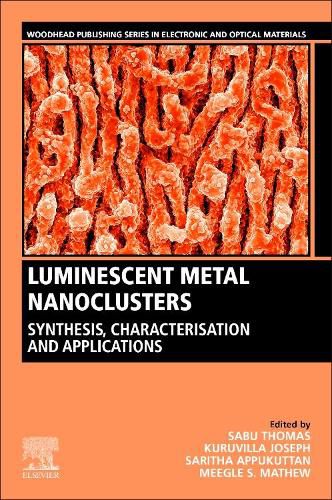Readings Newsletter
Become a Readings Member to make your shopping experience even easier.
Sign in or sign up for free!
You’re not far away from qualifying for FREE standard shipping within Australia
You’ve qualified for FREE standard shipping within Australia
The cart is loading…






Luminescent Metal Nanoclusters: Synthesis, Characterization, and Applications provides a comprehensive accounting of various protocols used for the synthesis of metal nanoclusters, their characterization techniques, toxicity evaluation and various applications and future prospects. The book provides detailed experimental routes, along with mechanisms on the formation of benign metallic clusters using biomaterials and a comprehensive review regarding the preparation, properties and prospective applications of these nano clusters in various fields, including therapeutic applications. Various methods to protect nanocluster materials to increase their stability are emphasized, including the incorporation of ligands (protein, small molecule, DNA, thiols).
This book addresses a gap in the current literature by bringing together the preparation, characterization and applications of all the possible types of reported metal nanoclusters and their hybrids. It is suitable for materials scientists and engineers in academia and those working in research and development in industry. It may also be of interest to those working in the interdisciplinary nanotechnology community, such as physical chemists.
$9.00 standard shipping within Australia
FREE standard shipping within Australia for orders over $100.00
Express & International shipping calculated at checkout
Luminescent Metal Nanoclusters: Synthesis, Characterization, and Applications provides a comprehensive accounting of various protocols used for the synthesis of metal nanoclusters, their characterization techniques, toxicity evaluation and various applications and future prospects. The book provides detailed experimental routes, along with mechanisms on the formation of benign metallic clusters using biomaterials and a comprehensive review regarding the preparation, properties and prospective applications of these nano clusters in various fields, including therapeutic applications. Various methods to protect nanocluster materials to increase their stability are emphasized, including the incorporation of ligands (protein, small molecule, DNA, thiols).
This book addresses a gap in the current literature by bringing together the preparation, characterization and applications of all the possible types of reported metal nanoclusters and their hybrids. It is suitable for materials scientists and engineers in academia and those working in research and development in industry. It may also be of interest to those working in the interdisciplinary nanotechnology community, such as physical chemists.